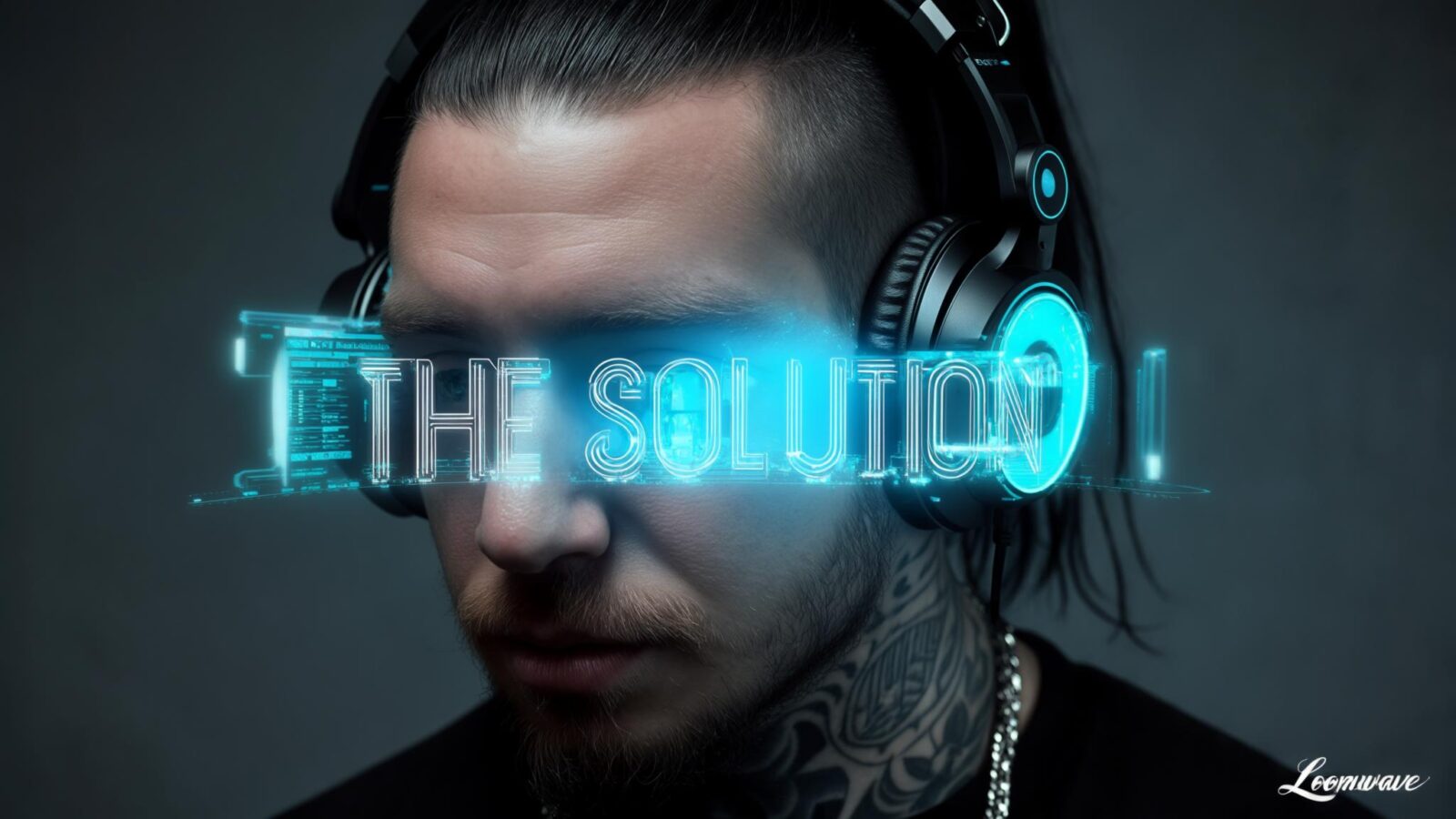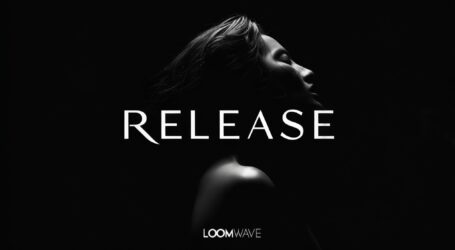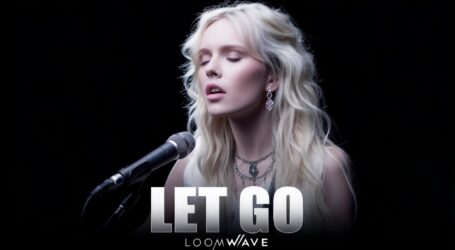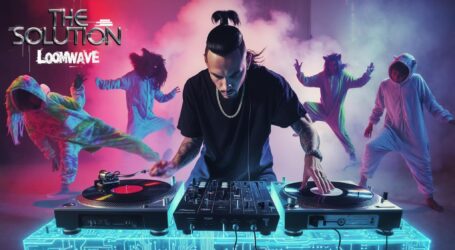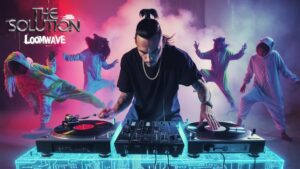Generative AI Music Creation Guide
Bottom Line Up Front: This comprehensive guide walks through creating “The Solution,” an AI-generated med rap track with professional music video, using Suno AI, Luma Dream Machine, and Kling. Learn the exact workflow, overcome common technical challenges, and achieve broadcast-quality results.
What You’ll Learn
Creating professional AI music videos requires mastering multiple platforms and understanding their unique strengths. This guide demonstrates the complete production workflow for “The Solution,” covering everything from initial audio generation to final video assembly. You’ll discover proven techniques for overcoming AI tool limitations and creating polished multimedia content.
Required Tools and Platforms
Essential AI Platforms:
- Suno AI: Music generation and audio mastering (version 4.0)
- Luma Dream Machine: Image generation and basic animation
- Kling: Advanced animation and lip-sync capabilities
- VSDC Video Editor: Final assembly and post-production
Credit Requirements:
- Suno AI: 100+ credits for quality iterations
- Luma: 20-30 generations for visual concepts
- Kling: 15-20 animations for video segments
Step 1: Initial Music Generation with Suno AI
Begin your production during focused creative sessions when you can dedicate uninterrupted time to experimentation. The initial generation phase works best during late-night sessions when you can fully concentrate on the creative process.
Generation Strategy:
- Create multiple tracks simultaneously to maximize credit efficiency
- Generate 3-5 songs in rapid succession during peak creative periods
- Allow concepts to develop over time rather than forcing immediate completion
- Save promising tracks for later development when inspiration strikes
Best Practices:
- Burn through available credits before expiration dates
- Focus on med rap genre for consistent results
- Create variations of promising concepts
- Document which generations show potential
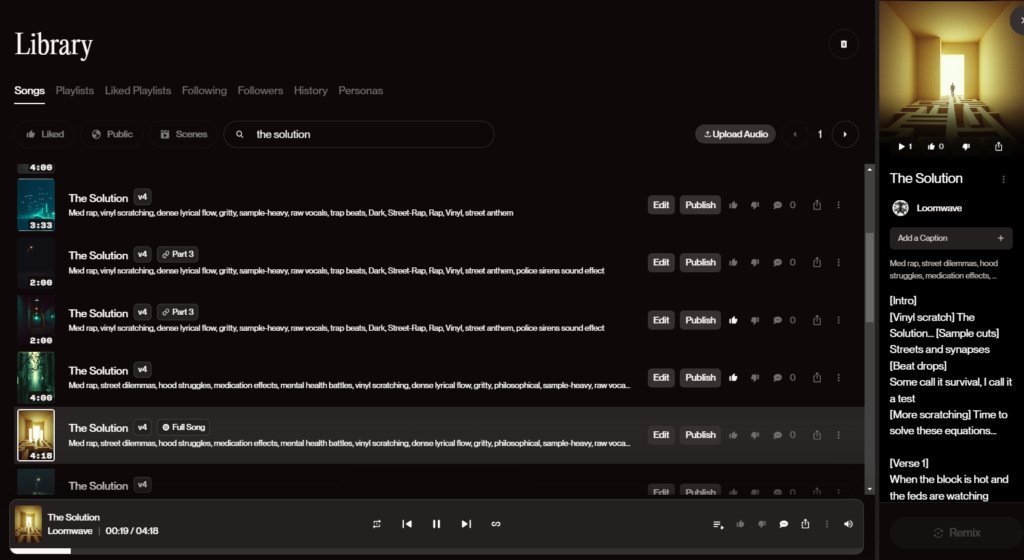
Step 2: Visual Concept Development
Transform audio-only tracks into complete multimedia experiences by developing strong visual concepts that complement your music. The visual development phase determines the overall aesthetic direction and technical approach for your music video.
Concept Development Process:
- Character Design: Create distinctive visual elements like DJs with specific features (long black hair, undercuts, neck tattoos)
- Environment Planning: Design settings that enhance the music’s energy (futuristic DJ setups, performance spaces)
- Supporting Elements: Add dynamic background elements (break dancers, crowd scenes)
- Technical Considerations: Plan for AI tool limitations in human anatomy and complex scenes
Platform Selection:
- Luma Dream Machine: Ideal for initial concept generation and static images
- Kling: Superior for character animation and complex movements
- Hybrid Approach: Use multiple platforms to overcome individual limitations

Step 3: Overcoming AI Animation Challenges
AI tools often struggle with human anatomy, particularly in dynamic poses like dancing. Here’s how to solve common generation problems and maintain creative vision.
Common Problems and Solutions:
Distorted Body Parts in Dancers:
- Problem: Break dancers appear with misshapen limbs and anatomical errors
- Solution: Use clothing modifications like onesies to simplify body recognition
- Creative Advantage: Transform technical limitations into unique aesthetic choices
- Execution: Generate dancers in werewolf onesies, pink onesies, and other distinctive costumes
Platform Performance Issues:
- Luma Limitations: Basic animation capabilities, suitable for simple movements
- Kling Advantages: Superior character animation, handles complex dance sequences
- Strategy: Start with Luma for concepts, transfer to Kling for final animation
Resource Management:
- Generate multiple versions of each concept
- Test different clothing and pose combinations
- Save successful prompts for future use
- Document what works for specific scenarios
Step 4: Advanced Animation Techniques
Create professional-quality video segments using proven animation workflows that maximize AI tool capabilities while minimizing common failure points.
Animation Workflow:
- 5-Second Base Loops: Create foundational dance movements
- 10-Second Extensions: Expand successful animations for chorus sections
- Seamless Looping: Ensure smooth transitions for repetitive video segments
- Quality Control: Generate multiple versions and select best performances
Technical Specifications:
- Loop Duration: 5-10 seconds optimal for AI generation
- Movement Complexity: Moderate motion prevents distortion
- Character Count: 4 background dancers maximum for quality results
- Scene Consistency: Maintain lighting and perspective across segments
Platform-Specific Techniques:
- Kling Animation: Excels at human movement and dance sequences
- Luma Backup: Use for static shots and simple camera movements
- Hybrid Assembly: Combine outputs from multiple platforms in post-production
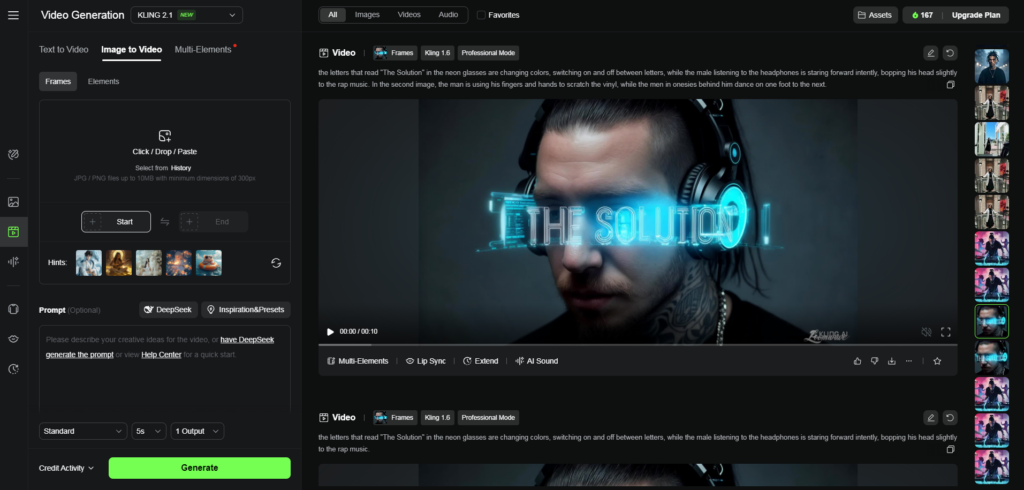
Step 5: Audio Mastering and Quality Enhancement
Transform initial AI generations into broadcast-quality audio through systematic remastering and iterative improvement processes.
Quality Assessment Criteria:
- Metallic Noise: Eliminate synthetic artifacts common in AI audio
- Dynamic Range: Ensure proper loudness and clarity
- Frequency Balance: Address harsh frequencies and muddy low-end
- Artistic Elements: Add vinyl scratching and atmospheric effects
Remastering Process:
- Generate 20+ Versions: Use substantial credits for quality iterations
- A/B Testing: Compare versions for optimal sonic characteristics
- Structural Editing: Remove unnecessary sections (bridges, extended outros)
- Enhancement Integration: Add scratching, vinyl effects, and texture
Technical Approach:
- Credit Investment: Expect 100+ credits for professional results
- Patience Required: Quality takes time and multiple attempts
- Version Control: Document successful prompt variations
- Final Selection: Choose based on overall sonic quality, not individual elements
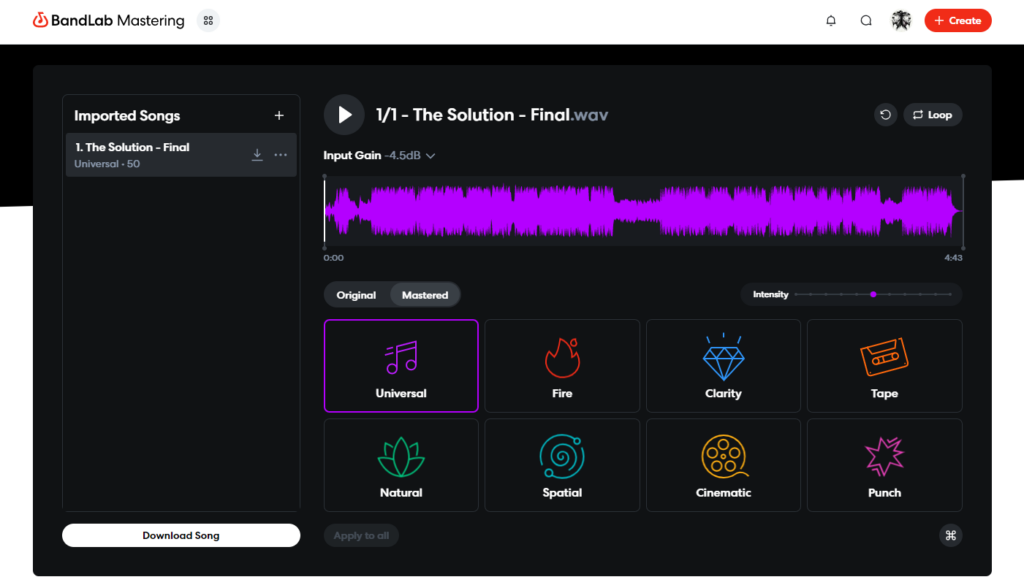
Step 6: Video Assembly and Post-Production
Combine all AI-generated elements into cohesive music videos using professional editing techniques and workflow optimization.
Assembly Workflow:
- Import Assets: Organize audio, video clips, and static images
- Timeline Construction: Sync video segments to musical sections
- Transition Creation: Smooth cuts between different AI-generated clips
- Branding Integration: Add intro/outro segments with consistent visual identity
VSDC Video Editor Techniques:
- Layer Management: Organize complex timelines with multiple AI assets
- Effect Application: Enhance AI footage with professional touches
- Export Settings: Optimize for YouTube and social media platforms
- Quality Control: Review final output for technical issues
Professional Touches:
- Intro/Outro Branding: Create signature visual elements (neon glasses, text overlays)
- Color Correction: Unify footage from different AI platforms
- Audio Sync: Ensure perfect alignment between remastered audio and video
- Final Review: Check for artifacts, sync issues, and quality consistency
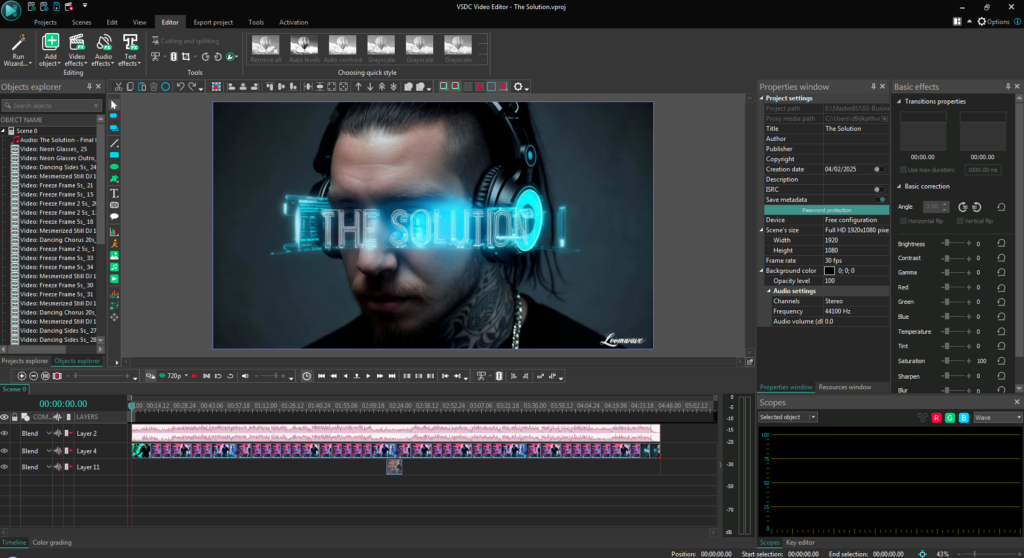
Results and Performance Metrics
The completed “The Solution” demonstrates achievable quality standards using current AI tools and proper workflow management. Total production time: approximately 2 hours of focused work across multiple sessions.
Production Statistics:
- Total Credits Used: 100+ Suno, 30+ Luma, 20+ Kling
- Generation Attempts: 20+ audio versions, 15+ video concepts
- Development Timeline: 6 days from concept to completion
- Final Assessment: Professional quality suitable for commercial release
Advanced Tips for Future Productions
Workflow Optimization:
- Batch Processing: Generate multiple concepts simultaneously
- Platform Rotation: Use different tools for their specific strengths
- Quality Standards: Invest in iterations rather than accepting first results
- Creative Flexibility: Transform technical limitations into aesthetic choices
Resource Management:
- Credit Planning: Budget substantial resources for quality results
- Time Allocation: Allow extended development periods for complex projects
- Documentation: Record successful prompts and techniques for future use
- Continuous Learning: Experiment with new platform features and capabilities
Common Pitfalls to Avoid
Technical Mistakes:
- Accepting first-generation results without iteration
- Using single platforms when hybrid approaches work better
- Insufficient credit allocation for quality standards
- Rushing through the remastering process
Creative Limitations:
- Giving up when initial concepts fail
- Not exploring alternative visual approaches
- Ignoring platform-specific strengths and weaknesses
- Failing to maintain consistent aesthetic vision
Next Steps and Future Development
Master these foundational techniques before advancing to more complex productions. The “The Solution” workflow provides a proven framework for creating professional AI music videos that can be adapted for different genres and artistic visions.
Scaling Your Production:
- Apply these techniques to longer-form content
- Experiment with different musical genres and visual styles
- Develop signature approaches that differentiate your work
- Build libraries of successful prompts and techniques
Ready to create your own AI music videos? Start with these proven techniques and develop your unique approach to multimedia AI content creation.

Diary Of A Mad Chaos is a daily diary written from March 1996 until today, of which individual books and book series have been created, namely “The Lost Years” an exploration of young, entwined love, the “Wubao In China (猎艳奇缘)” book series which provides an extensive comparative analysis of the cultural differences between Eastern and Western societies, and the book titled “Foreigner (华人)” an exploration of race relations in Australia.


